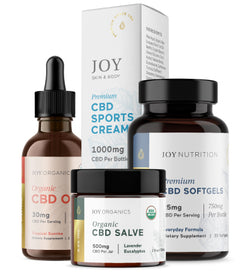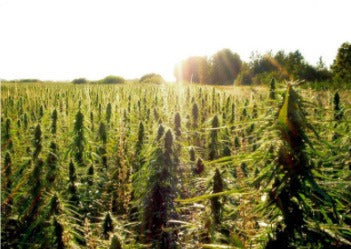
Understanding the ideal temperature for THC degradation plays an essential role in maximizing its potential benefits. Adding heat is crucial for activating THC, but it's important to do just what is necessary and avoid burning this valuable compound. So, at what temperature does THC degrade? Let’s take a look at the optimal temperature range for activating THC without reaching the Delta 9 THC boiling point!
What Is THC Activation?
The process of THC activation is essential for unlocking the full range of effects and potential benefits that cannabis has to offer. When consumed in its raw form, the plant contains only trace amounts of THC, making it relatively inactive from a psychoactive standpoint. By applying heat through methods such as smoking, vaporizing, or cooking, the THCA present in the plant material undergoes decarboxylation, producing the desired effects.
THC activation, also known as decarboxylation, is the process of converting tetrahydrocannabinolic acid (THCA), a non-psychoactive compound found in raw cannabis, into the psychoactive compound Delta 9-tetrahydrocannabinol (THC).
This transformation occurs when THCA is exposed to heat, which causes the release of a carboxyl group (COOH) in the form of carbon dioxide (CO2). The resulting compound, THC, is responsible for the characteristic "high" or euphoric sensation associated with cannabis consumption.
Heat and Cannabinoid Development
Heat plays a significant role in the development of cannabinoids during the growth of the cannabis plant, as well as in the activation of THC upon consumption. Let's take a closer look at the importance of heat in these two distinct stages.
During Plant Growth
Temperature is one of the critical factors influencing the growth and development of cannabinoids in the cannabis plant. Depending on the strain, cannabis plants thrive in a temperature range of 70-85°F (21-29°C) during the day and 50-70°F (10-21°C) during the night. These temperatures create an optimal environment for the biosynthesis of cannabinoids—including THCA, the precursor to THC.
Excessively high or low temperatures can negatively impact cannabinoid production. High temperatures can cause stress on the plant, leading to reduced overall growth, while low temperatures can slow down metabolic processes and hinder cannabinoid synthesis. Maintaining the appropriate temperature range throughout the plant's life cycle is crucial for ensuring the development of a healthy, cannabinoid-rich plant.
Activating THC
As discussed earlier, heat is essential for activating THC through the process of decarboxylation. This process involves the conversion of non-psychoactive THCA into psychoactive THC by applying heat to the plant material.
The ideal temperature range for decarboxylation is around 220-250°F (104-118°C), though it may vary depending on factors such as elevation, your oven, the method of consumption, and personal preferences.
Heating cannabis at the right temperature ensures that THCA is effectively converted into THC, unlocking the full range of psychoactive effects and potential benefits. However, overheating the plant material can lead to the burning of THC, resulting in a less potent and potentially unpleasant experience.
How to Know if You Burned THC
Determining whether you have burned THC can be challenging. However, there are a few vital indicators that suggest the THC has been subjected to excessively high temperatures, causing it to degrade or even burn.
Smell and Taste
If you burn a pie in the oven, you know. Marijuana is no different!
Burned THC often results in a harsh, unpleasant burnt odor. You will smell it in the air, and it will be distinctly different from a regular weed roast.
Once you burn your weed, you may intend to still use it. If your cannabis product tastes bitter or charred, it's likely that the THC has been burned.
Appearance
Let’s harken back to that pie. If it looks burnt, it’s probably burnt. Same again for marijuana.
When THC is burned, the plant material may turn black or dark brown, indicating that it has been subjected to high temperatures. Ash residue or uneven combustion can also suggest that the THC has burned.
Decreased Effects
If you notice a decrease in potency or a change in the expected psychoactive effects, it may be due to the degradation of THC caused by burning. Burned THC can convert into other compounds, such as cannabinol (CBN), which has different properties and effects.
At What Temperature Does THC Burn?
THC begins to burn at temperatures around 315°F (157°C). Burning can lead to the degradation of THC. However, THC degrades long before it reaches its burning point.
At What Temperature Does THC Degrade?
Burning marijuana flowers can lead to the degradation of THC. While THC starts to degrade at temperatures around 315°F (157°C), significant degradation occurs at higher temperatures, typically above 392°F (200°C).
At these elevated temperatures, THC can break down into other compounds. To preserve the potency and desired effects of THC, it is crucial to maintain the temperature within the recommended range for vaporization, which is between 285-365°F (140-185°C).
Can You Make Tea with Cannabis?
Making tea with cannabis can activate THC, but it is not the most efficient method due to THC's low solubility in water. To increase the effectiveness of THC activation when making cannabis tea, a few steps should be followed:
First, decarboxylate the cannabis by heating it at around 220-250°F (104-118°C) for 30-45 minutes. Remember, the process converts THCA, the non-psychoactive precursor, into THC.
Since THC is fat-soluble and not water-soluble, add a fat source such as butter, coconut oil, or milk to the tea. This will help THC bind to the fat molecules, allowing for better absorption and activation.
Steep the decarboxylated cannabis in hot water along with the chosen fat source for 15-30 minutes, allowing the THC to bind with the fat molecules and become more bioavailable.
While making tea can activate THC to some extent, other methods like vaporization or smoking provide more efficient and consistent results in terms of THC activation and consumption. Nonetheless, cannabis tea can still offer a milder and more soothing alternative for those seeking a different experience.
What Is Delta 9 THC’s Boiling Point?
While making tea with hemp or marijuana is another method to activate THC, it is less efficient than other methods, such as vaporization or smoking. When preparing cannabis-infused tea, the process of decarboxylation occurs, which converts THCA into THC. However, it's important to remember that THC is not water-soluble, and its boiling point plays a crucial role in determining the effectiveness of this method.
As mentioned earlier, the boiling point of Delta 9 THC is approximately 315°F (157°C). When making cannabis tea, the water temperature typically doesn't reach this boiling point, which can lead to a less effective extraction of THC.
To increase the efficiency of the process, adding a fat source such as butter, coconut oil, or milk can help. THC is fat-soluble, meaning it will bind to the fat molecules, allowing for better absorption and activation.
Can You Reactivate THC After It Is Burnt?
Once THC has been burned and degraded, there is no way to reactivate or restore it to its original state. The process of burning THC involves breaking down the compound into other chemicals. This degradation is irreversible.
How to Prevent Burning THC
Instead of attempting to reactivate burned THC, it's essential to focus on preventing the burning of THC in the first place. Here are a few tips to help avoid burning THC.
Use a Vape Pen
Vaporizers heat cannabis to a controlled temperature that's below the combustion point, allowing you to enjoy the benefits of THC without burning it.
Opt for a vaporizer with adjustable temperature settings and choose a temperature within the recommended range for vaporization (285-365°F or 140-185°C).
Use a Lower Lighter Heat Setting
If you prefer smoking, use a lower heat setting, and take slow, gentle puffs to minimize the risk of burning THC.
Monitor Temperature
When cooking with cannabis, keep an eye on the temperature and ensure it doesn't exceed the boiling point of THC (approximately 315°F or 157°C). Also, keep an eye on the buds to see if the appearance changes.
Don’t Burn the THC!
Activating THC is crucial to experience its psychoactive effects and benefits. However, it is essential to avoid burning THC, as it can lead to degradation, resulting in a decrease in potency and altered effects. Remember, the boiling point of Delta 9 THC is approximately 315°F (157°C), which is the temperature at which THC transitions from a solid or liquid state to a gaseous state.
It's essential to use cannabis responsibly and be mindful of the temperatures when consuming THC to avoid burning and degrading the compound. By maintaining appropriate temperatures and using the right consumption methods, you can experience the desired effects of THC without unnecessary risks.
Hannah Smith is Joy Organics Director of Communications. She is driven by her passion for providing clear and accessible wellness and CBD education. In 2015, she received her BA in Media, Culture and the Arts from The King’s College in New York City and before Joy Organics, worked as writer and photographer in the Middle East and North Africa. Her work has been featured on Forbes, Vice, Vox, Denver Post, and the Coloradoan.








